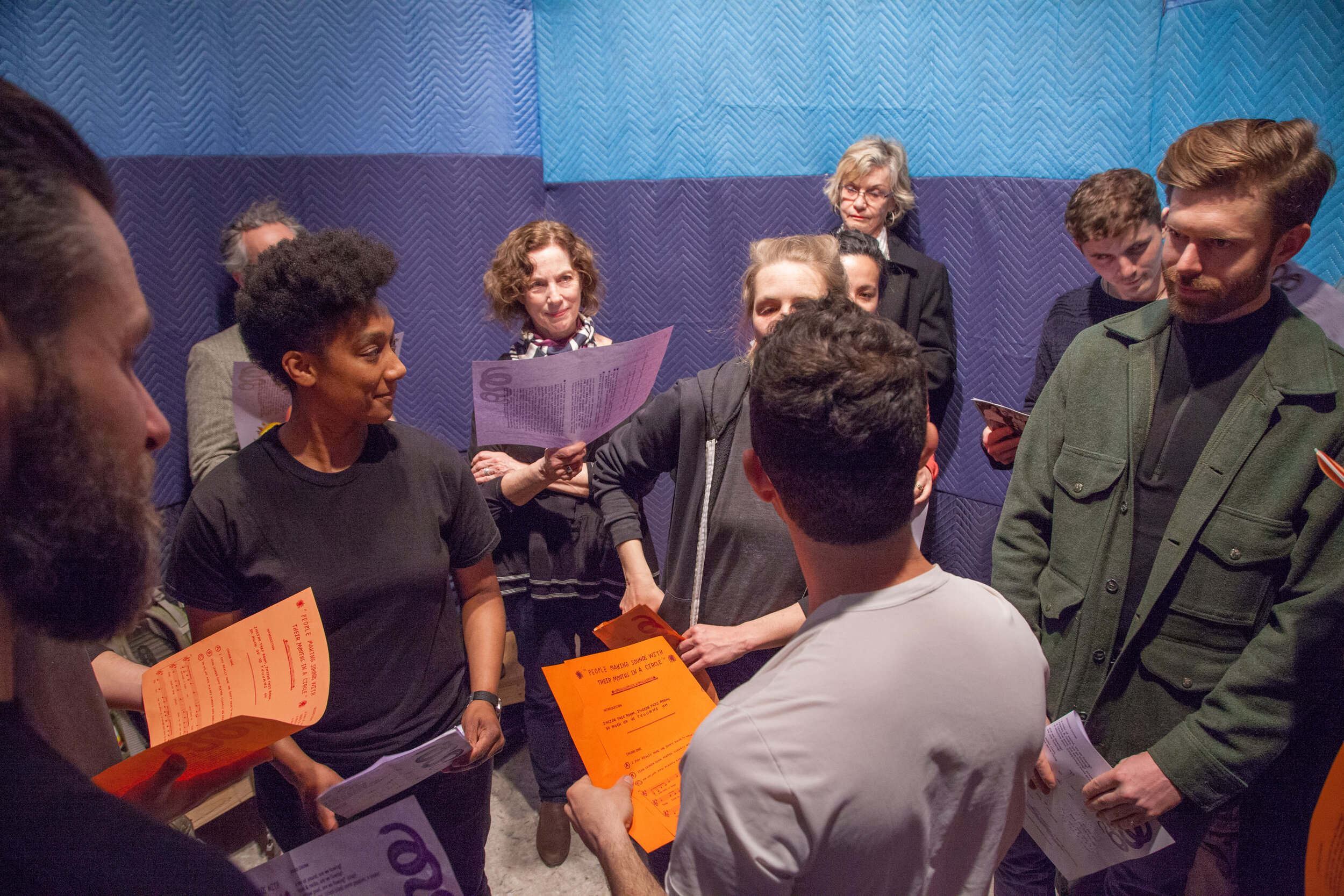








Singing Room
A Participatory Choral Performance at 205 Hudson Gallery, NYC | April 19-May 5, 2018 | Conceived and devised by Patrick Costello | Song co-written by Patrick Costello and Emily Bate with assistance from Chenda Cope | Choir Room Co-Designed by Mitchell Dose and Patrick Costello with construction assistance from Jessi Li | Choir Directors: Anna Young, Chenda Cope, Emily Bate, DeCarol Davis, and Patrick Costello
“We do not seek partiality for its own sake, but for the sake of the connections and unexpected openings that situated knowledges make possible. The only way to find a larger vision is to be somewhere in particular.” - From “The Persistence of Vision” by Donna Haraway
Inspired by group singing traditions like Sacred Harp, Singing Room took shape as gallery visitors signed up to participate on lists posted outside a twelve-foot tall acoustic structure. Made of plywood and lined with repurposed moving blankets, the room allowed a group of ten to twenty people to congregate in a circle and learn a song co-written by myself and Philadelphia-based composer Emily Bate.
I started writing the first lines of the song in the wake of the 2016 US presidential election and its accompanying vitriolic hate speech, which escalated into 2017’s Unite The Right rally in my hometown of Charlottesville, Virginia. The sadness and anger I felt eventually transformed into a deep yearning for opportunities to practice different ways of being in relationship with other people — modes which countered the antagonistic bigotry promoted by the White House. Singing Room was a space where people could practice being vulnerable, taking risks and working together toward a shared creative goal.
A rotating group of choral directors taught the song to participants, often working in teams of two or three. Upon learning the piece, the newly-formed chorus performed it only for one another, inside the room. People came together and activated the work eight times throughout the exhibition at 205 Hudson Gallery.
Layered vocal harmonies and complicated arrangements made it nearly impossible for any singer to hear the full composition from their singular vantage point within the chorus. For every moment of transcendent collectivity, participants also felt the inherent limitations of their individual bodies.
Image credits: Ben Simon
Subsequent performances of this piece (without the original structure):
Final Fridays, American Art Wing, Philadelphia Museum of Art, 2018
Emily Bate’s Trust Your Moves Chorus Recital, Calvary Center, Philadelphia, 2018